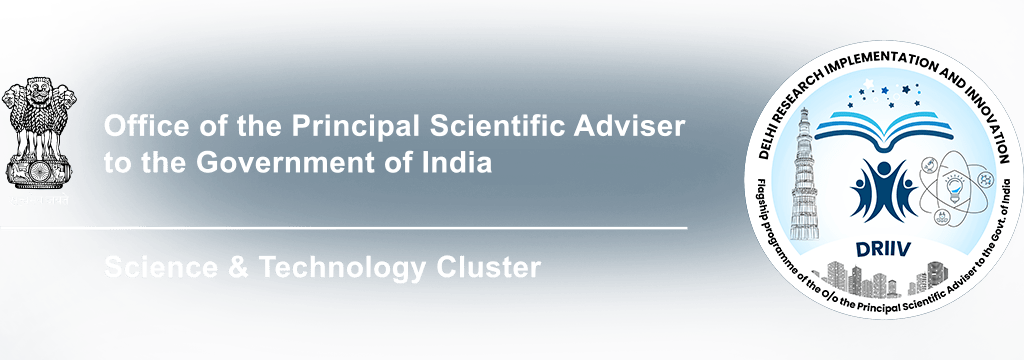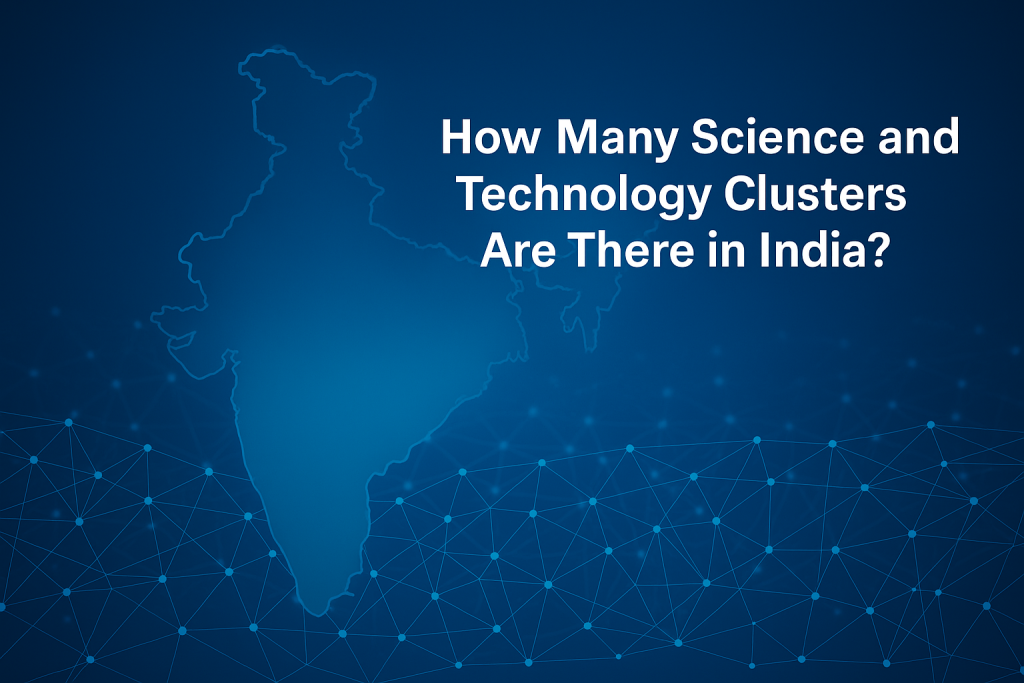India is on the path to becoming a global leader in science, technology, and innovation. One of the key steps taken by the Government of India to strengthen research and development is the creation of Science and Technology Clusters (S&T Cluster). These clusters are focused on solving national challenges by encouraging collaboration between academia, research institutes, industry, and startups.
In this blog, we’ll explore how many Science and Technology Cluster exist in India, what they do, how they contribute to the country’s growth, and how DRIIV is playing a central role in shaping this transformation.
What is a Science and Technology Cluster?
A Science and Technology Cluster is a regional innovation ecosystem where top institutions, research labs, startups, industries, and government bodies come together to work on common goals. These clusters promote knowledge exchange, research collaboration, and technology commercialization.
Each S&T Cluster focuses on region-specific challenges while also supporting the broader national vision of AtmaNirbhar Bharat (self-reliant India) and Viksit Bharat 2047 (Developed India by 2047).
How Many Science and Technology Clusters Are There in India?
As of now, there are six official Science and Technology Clusters in India. These clusters were launched by the Office of the Principal Scientific Adviser (PSA) to the Government of India under the “Science, Technology and Innovation Clusters” initiative.
Here is a list of the six S&T Clusters:
- Delhi Research Implementation and Innovation (DRIIV) – Delhi NCR
- Hyderabad Cluster – Telangana
- Pune Knowledge Cluster (PKC) – Maharashtra
- Bengaluru Science and Technology Cluster – Karnataka
- Jodhpur S&T Cluster – Rajasthan
- Varanasi S&T Cluster – Uttar Pradesh
These clusters bring together stakeholders from central and state government bodies, IITs, CSIR labs, ICMR institutes, and private industry partners.
DRIIV: Delhi’s Leading Science and Technology Cluster
DRIIV (Delhi Research Implementation and Innovation) is one of the first and most impactful Science and Technology Clusters in India. DRIIV operates in the Delhi NCR region and brings together leading institutions such as:
- IIT Delhi
- AIIMS Delhi
- IGIB (CSIR)
- JNU
- University of Delhi
- Industry partners and startups
Key Focus Areas of DRIIV:
- Air Pollution Mitigation
- Water Security and Wastewater Management
- Waste to Energy
- Sustainable Urban Mobility
- Precision Healthcare using AI and ML
- Green Energy Technologies
DRIIV’s mission is to provide sustainable technology solutions and build a strong innovation ecosystem in line with India’s developmental goals.
Why Are S&T Clusters Important?
The S&T Clusters are helping India in several ways:
1. Boosting Local Innovation
They allow local innovators, researchers, and industries to come together and solve region-specific problems.
2. Bridging Gaps
S&T Clusters bridge the gap between academic research and real-world application.
3. Enabling Commercialization
Many research ideas die in labs. Clusters help bring these ideas to market by supporting startups and tech transfer.
4. Driving AtmaNirbhar Bharat
By building local capacity and reducing dependency on foreign technology, these clusters support India’s vision of becoming self-reliant.
5. Creating Jobs
As innovation grows, so do entrepreneurship and employment opportunities, especially in STEM fields.
How Do S&T Clusters Work?
S&T Clusters operate on a hub-and-spoke model. A central body, like DRIIV in Delhi, acts as a hub and connects various stakeholders (spokes), such as:
- Academic Institutions
- Government Agencies
- Incubators and Accelerators
- Non-profit Organizations
- Corporates and MSMEs
- Startups and Innovators
They facilitate funding, R&D collaborations, technology testing, and policy dialogue.
Infrastructure and Innovation
These clusters are not just about ideas—they also create physical and digital infrastructure:
- Living labs for real-time technology testing
- Incubation centers for startups
- Data platforms for research
- Pilot projects in water, air, and energy
Growth and Future Potential of S&T Clusters
India’s Science and Technology Cluster model is still growing but has already started to show major success stories in:
- Smart waste management
- Air pollution monitoring
- Water purification and recycling
- AI-enabled diagnostics
- Electric mobility
In the future, more clusters will be added in regions like the Northeast, Central India, and Coastal states, depending on strategic needs.
Global Context
Science and Technology Clusters are not unique to India. Countries like the US (Silicon Valley), UK (Oxford-Cambridge Arc), and South Korea (Daedeok Innopolis) have proven that regional innovation clusters can fast-track national development.
India’s model, however, is unique because it emphasizes inclusive, sustainable development and government-academia-industry collaboration under one ecosystem.
DRIIV’s Contribution to Nation Building
DRIIV is more than just a cluster; it’s a catalyst for change. With its wide network, DRIIV:
- Conducts pilot projects in real urban settings
- Works with government departments for faster adoption
- Connects young innovators to real-world challenges
- Creates a culture of “Science for Sustainability”
Its work is closely aligned with missions such as:
- Swachh Bharat Abhiyan
- National Clean Air Programme
- Smart Cities Mission
- Startup India
- Digital India
Government Support
The Office of the PSA to the Government of India provides vision and support for these clusters. Other agencies like DST, DBT, CSIR, ICMR, and NITI Aayog also collaborate to enhance the impact of S&T Clusters.
Case Study: DRIIV’s Phycoremediation Success
One great example is DRIIV’s project on Phycoremediation—a technique that uses algae to clean water. In partnership with local authorities and researchers, DRIIV helped clean polluted water bodies in Delhi NCR. This sustainable technology is now being expanded across more cities in India.
Role of Startups in the S&T Cluster
Startups play a key role in the Science and Technology Cluster ecosystem. Many student-led and deep-tech startups get access to:
- Lab space and mentoring
- Industry connections
- Pilot deployment opportunities
- Grants and funding
DRIIV supports such startups, especially those working on health, environment, and energy.
How Clusters Create a Circular Economy
The S&T Cluster model promotes the circular economy by encouraging:
- Waste to energy solutions
- Water recycling
- Renewable energy adoption
- Reduction in carbon emissions
- This supports India’s net-zero and SDG goals.
Impact in Numbers (DRIIV Example)
- Over 20+ pilot projects deployed
- 300+ stakeholders engaged
- 50+ startups supported
- Multiple patents filed and commercialized
- Training programs for capacity building
Collaboration Is Key
The power of a Science and Technology Cluster lies in its partnerships. At DRIIV, collaboration is not an option—it’s a culture. Whether it’s a scientist, policy maker, entrepreneur, or student—everyone has a role to play.
FAQs
1.How many Science and Technology Clusters are currently operational in India?
There are six operational Science and Technology Clusters: Delhi (DRIIV), Hyderabad, Pune, Bengaluru, Jodhpur, and Varanasi.
2.What is the role of DRIIV in the S&T Cluster network?
DRIIV is a leading S&T Cluster in Delhi NCR that works on environmental sustainability, health tech, green energy, and more. It enables collaboration between research, industry, and government to solve regional problems.
3.Are S&T Clusters only for academic and research institutions?
No, S&T Clusters include academic institutions, industries, startups, NGOs, and government agencies to create holistic innovation ecosystems.
4.What are the main focus areas of DRIIV?
DRIIV works on:
- Air pollution control
- Wastewater treatment
- Green hydrogen
- AI in healthcare
- Waste to energy solutions
5.What is the difference between a startup hub and an S&T Cluster?
A startup hub mainly supports new businesses. An S&T Cluster like DRIIV not only supports startups but also drives research, policy, and implementation in partnership with academia and government.
6.How can I collaborate with DRIIV?
You can connect with DRIIV through their website, participate in innovation challenges, or apply for pilot programs and research collaborations.
Conclusion
India’s Science and Technology Clusters are engines of innovation that will power the country’s journey to Viksit Bharat. With only six clusters today, the model is already showing powerful results—and DRIIV is leading from the front.
As we look to 2047, these clusters will continue to grow, expand, and empower local ecosystems to build sustainable, inclusive, and technology-driven solutions for India’s future.
At DRIIV, we believe in Science for Sustainability, and we invite you to join us in shaping a stronger, self-reliant, and innovative India.




